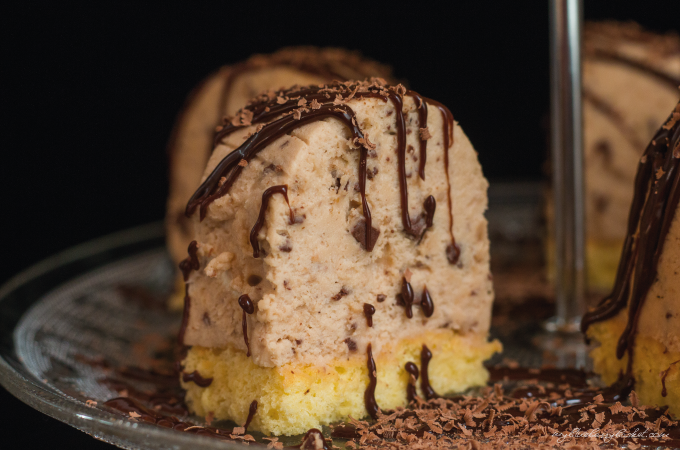
So much has happened during those last few weeks. I certainly wasn’t idle, even if my last blog post was published several weeks ago. One of the highlights was the practical training I received with Adi Bittermann at his “Vinarium” in Göttlesbrunn, Austria (Europe). Adi Bittermann is one of the top chefs of Austria and I was allowed to watch and even help him and his team prepare the most delicious dishes. I can assure you: each day was like an adventure!
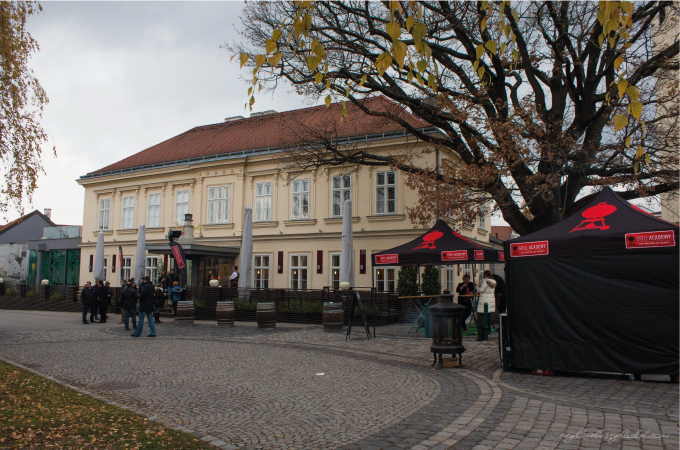
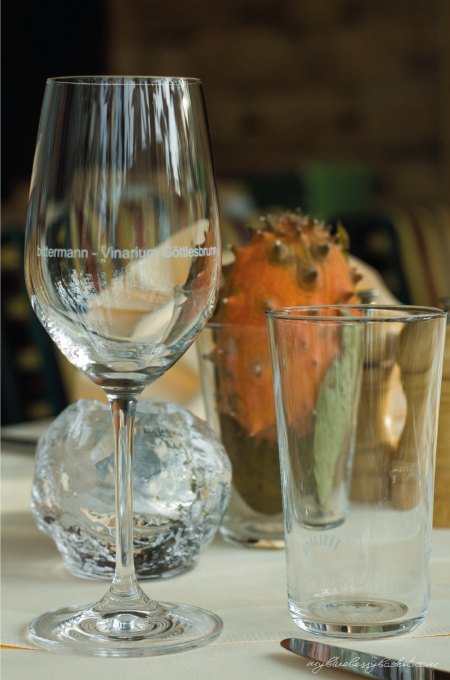
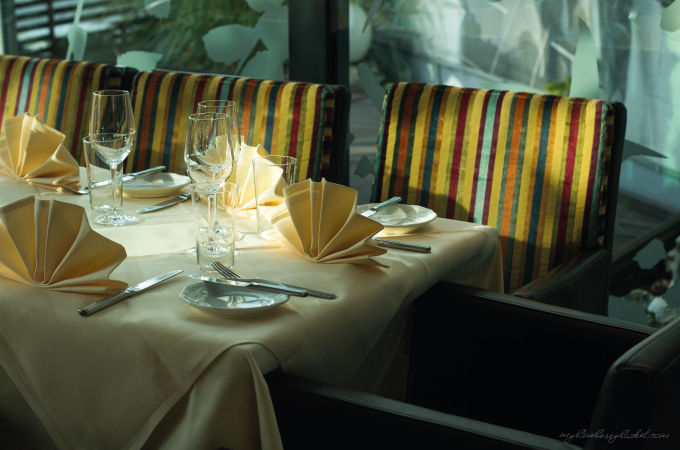
I arrived on a Wednesday morning and was warmly greeted and welcomed by Adi Bittermann’s wife Bettina. Then I was brought to the place which should be the center of all my activities for the next five days, the kitchen. Martin Wresnig, the head chef, handed me an apron and a tea towel, took me on a short tour around the kitchen, introduced me to the team and then I got going. This first day I more or less spent alongside of Martin learning about the way how food is prepared and the dishes are made at Bittermann’s and what the different procedures are. He also signalized that that weekend would be one of the busiest and most labor-intensive of the year as the winegrowers of Göttlesbrunn had a kind of open house and would open their doors and wine cellars for visitors and consequently a lot of guests would also be expected at the Vinarium. … Needless to say that his prediction proved to be true.
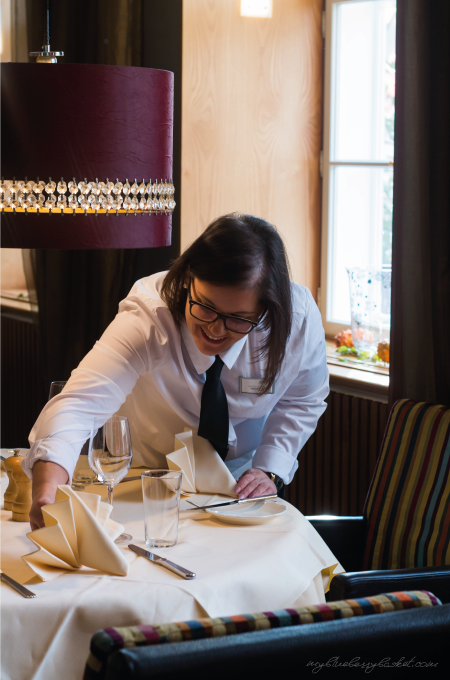
Adi Bittermann is the owner of the Vinarium. This pleasant and likeable man is not only a starred chef but also won the BBQ World Championship in Goteborg in 2015 and is the author of numerous cookbooks. He has an impressive BBQ academy in his backyard where beginners and more advanced pitmasters can learn from him and gain better insights into the world of BBQing.
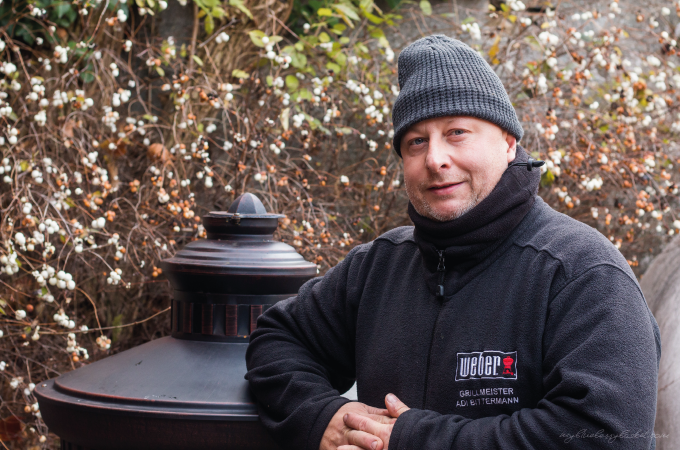
Adi Bittermann
As Adi’s BBQ Academy enjoys great popularity he hired the young, highly skilled chef Martin Wresnig as maître de cuisine some three years ago. While cleaning a whole crate-full of cauliflowers Martin told me about his professional development, which truly is nothing to sneeze at, after all, he was working in some of the best restaurants and hotels in Austria and also in various kitchens around the world (e.g. in Kiev and New York).
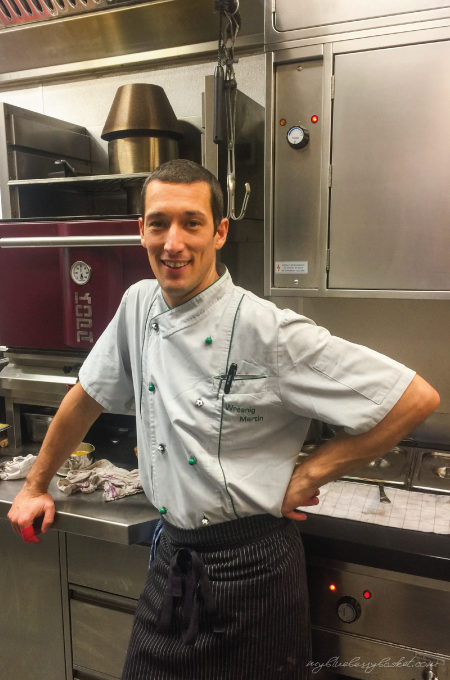
Martin Wresnig
At Bittermann’s there are many talented, young apprentices and chefs who work for Martin and Adi.
Eva and Ilir prepare the starters and amuse-bouches.
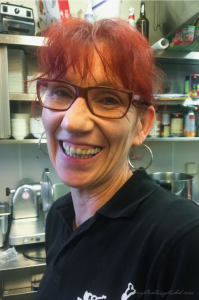
Eva
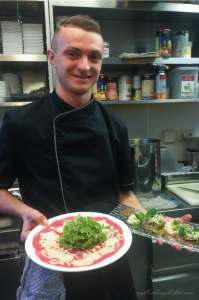
Ilir
Matthias is in charge of the meat and fish dishes.
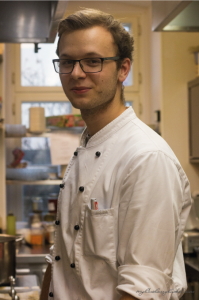
Matthias
Daniel is the entremetier, preparing side dishes and vegetables.
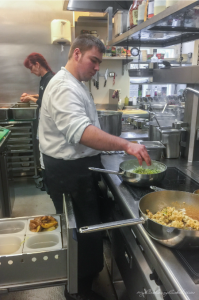
Daniel
Anita, Maria and Barbara are three passionate pastry cooks.
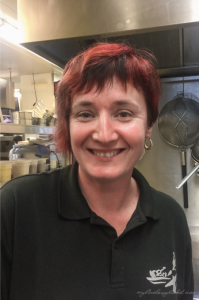
Anita
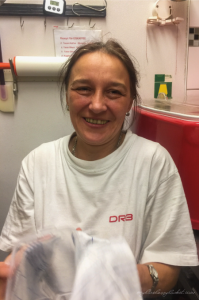
Maria
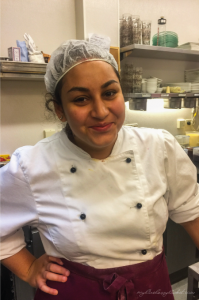
Barbara
And Nico, the young, enthusiastic apprentice is found here and there and helps Martin serve and arrange the food on the plates.
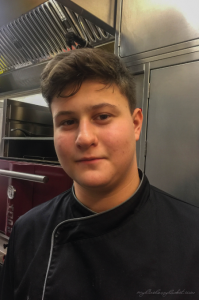
Nico
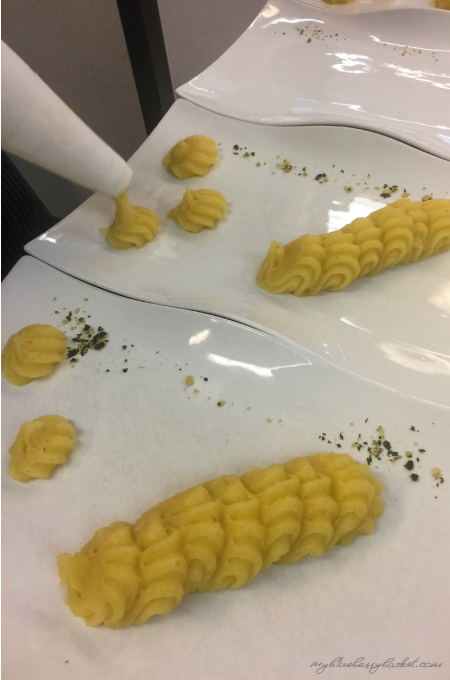
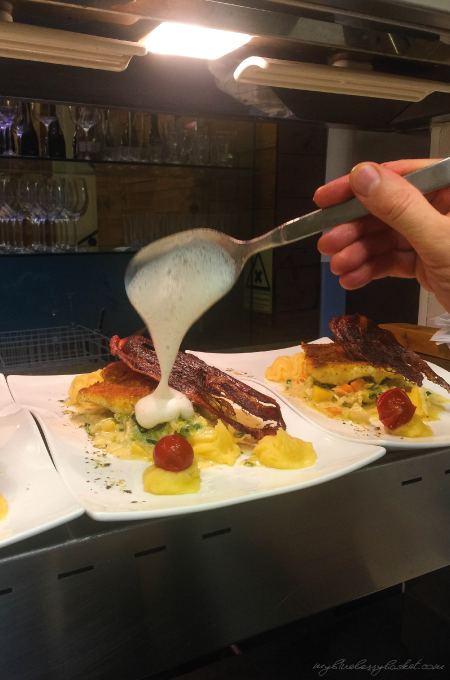
They certainly are a winning team. Perfection is their credo, passion for detail is a maxim, creativity a must and multitasking a necessary skill.
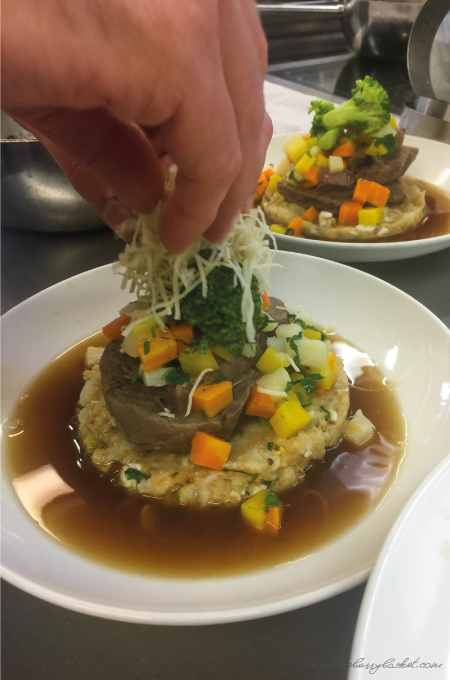
What is most important for Adi Bittermann and Martin Wresnig is the proper balance and harmony of all the ingredients, which should create a real taste adventure and an adventure of the senses. Bittermann’s team does not only cook to fill their guests’ tummies but also to surprise their palates and their noses. But you eat with your eyes first and arranging the food in an appealing way is most important. You see, the only thing the guests don’t experience with regard to their food is the hearing. This fourth sense is the sole privilege of the kitchen team, where you can constantly perceive a bubbling, sizzling, spluttering and god knows what else.
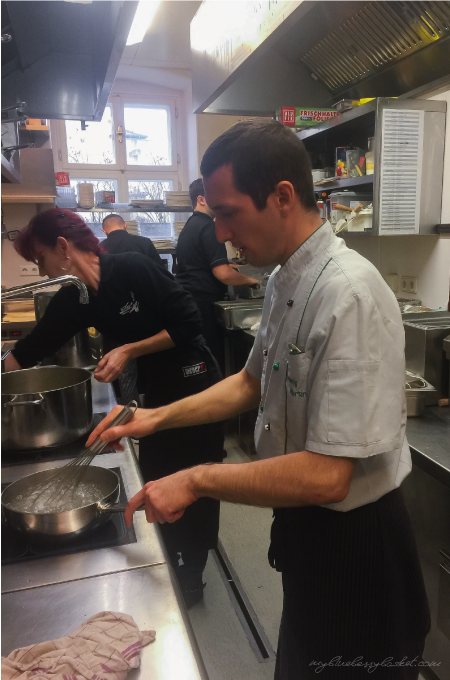
For Martin, the nose is one of the most essential sensory organs when cooking. He claims that he can smell if a dish contains the necessary amount of salt. I will certainly have to practice a lot until I can master this skill. 😉 What he could illustrate very well, though, is how the odor and scent of certain ingredients change during the process of cooking. You don’t believe me? Well, go ahead and bend over your pots and pans the next time you cook something. 😉 Well, Martin used simple flour to illustrate this phenomenon. He prepared a typical Austrian dish which requires the making of roux, the basis for thick sauces made of butter and flour. Take the time and smell the flour when it is still in the package, then smell again after it has been added to the butter and experience the change it takes once all the other ingredients are added. Of course, you must block out the scent of the other herbs and ingredients when you do this experiment. But it works! Or maybe I was just imagining it. 😉 Anyway, my nose plays a much greater role in my cooking now.
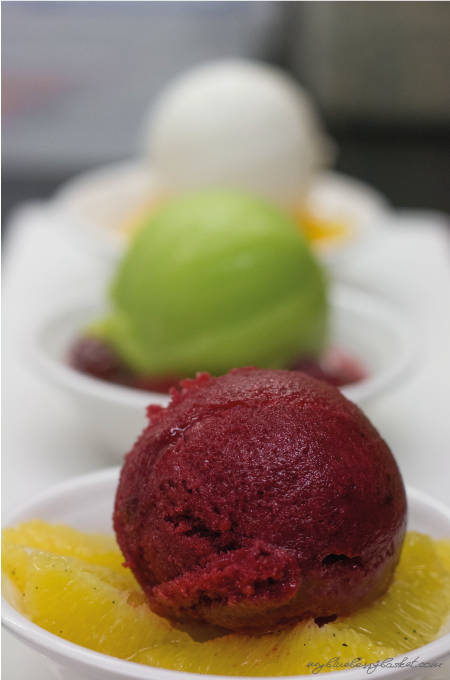
Pepper is only scarcely used for seasoning at the Bittermann’s. Grated nutmeg carries a much greater weight. According to Martin, the warm, woody and slightly peppery flavor is ideal for seasoning.
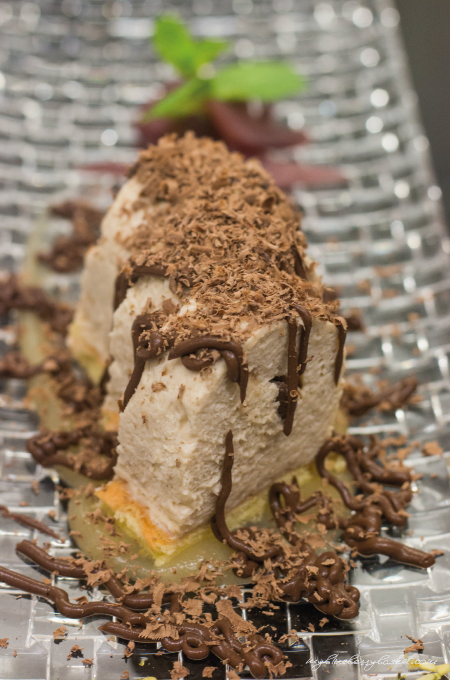
The original Bittermann Chestnut Terrine
I picked two dishes of Adi Bittermann’s menu to try at home and present to you. I won’t start, as you would expect, with the main course but rather show you an impressive dessert first. You will find the main dish in my next blog post. This “dolce” is perfect for the cold season and makes a perfect holiday dessert. It is a chestnut terrine which was served with red wine pears and chocolate sauce at the Vinarium. Unfortunately, I didn’t get a chance to watch Anita prepare the red wine pears, so I made caramelized red wine pears at home. I also had some oranges and I caramelized some wedges as well. I think that the colors red and orange blend in well with the light brown color of the chestnut terrine and the dark color of the chocolate sauce. The cutting-edge detail of this recipe is the sponge cake, which kind of forms the foundation for this tender terrine.
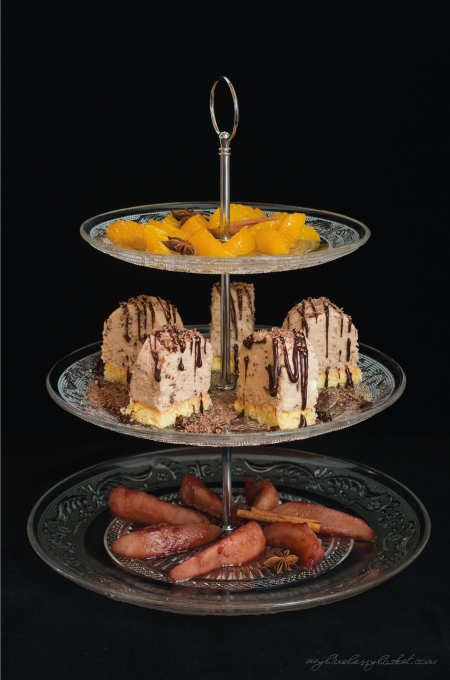
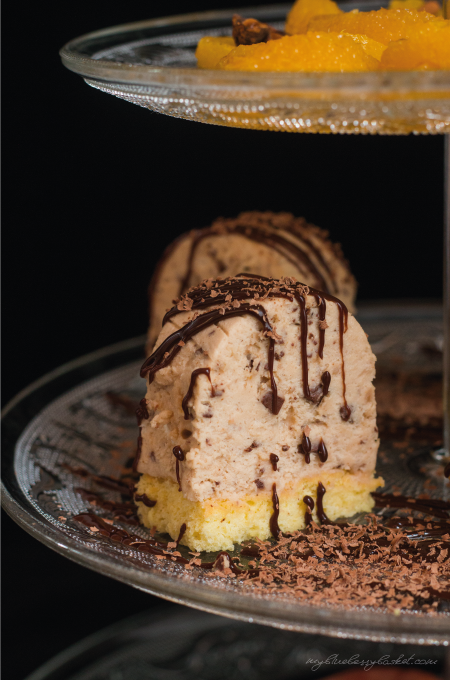
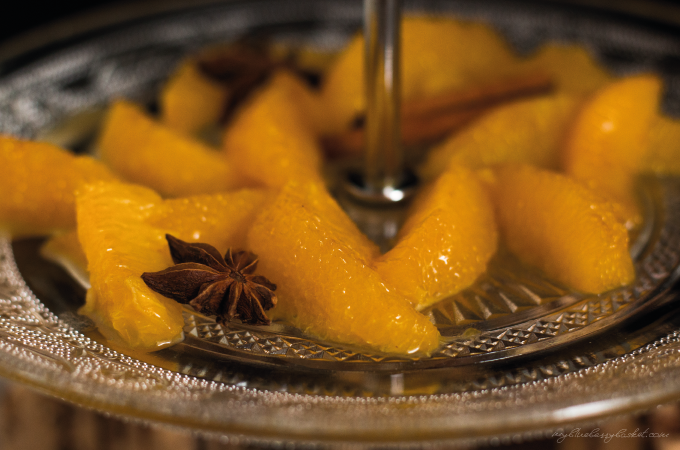
Chestnut Terrine
Serves 4
For the terrine:
1 cup (240 ml) milk
a pinch of salt
5 egg yolks
½ cup (100 g) sugar
6 sheets gelatin
2 tablespoons rum
12 oz. (340 g) chestnut puree
2 (480 ml) cups whipping cream
about 2 oz. (50 g) dark chocolate, chopped
For the sponge cake:
3 eggs
¼ cup and 2 tablespoons (75 g) sugar
¾ cups and 2 tablespoons (100 g) plain flour
For the caramelized oranges:
2 oranges
2 teaspoons butter
2 teaspoons sugar
For the caramelized red wine pears:
2 pears
2 teaspoons butter
2 teaspoons sugar
1/3 cup and 2 tablespoons (100 ml) red wine
For the chocolate sauce:
1/3 cup and 2 tablespoons (100 ml) cream
4 oz. (100 g) dark chocolate
some grated chocolate for garnishing
2 terrine moulds (about 5x5x40 cm) or 1 longish cake tin/pan
Preheat the oven to 180°C / 356°F.
For the sponge cake, use a food processor to beat the eggs and the sugar until very foamy and fluffy (takes about 6-8 minutes). Sift the flour over the egg-sugar mixture (a tablespoon at a time) and carefully fold the flour into the mixture. Put some parchment paper onto a baking try and spread the sponge cake mixture (about 1 – 1,5 cm thick). Bake in the preheated oven for about 15 minutes until the cake is golden brown. Leave to cool.
For the terrine, soak the gelatin in cold water. Put the milk, salt, egg yolks and the sugar in a pan and heat slowly (over low to medium heat) until it starts to thicken, stirring constantly. Don’t bring to the boil as the eggs will flocculate. Press the custard through a sieve into the bowl of your food processor. Add the chestnut puree and beat until well combined and all the larger pieces have disappeared.
Discard the soaking water of the gelatin and put it into a small saucepan. Add the rum and heat until the gelatin has dissolved. Add to the chestnut-custard and mix well to combine.
Whip the cream until stiff peaks form. Carefully fold the cream into the mixture. Fold the chopped chocolate in as well.
Use your terrine/cake mould(s) to cut the sponge cake into strips that fit your mould. Line your mould(s) with cling film.
Put the chestnut cream into the mould(s) and put the sponge cake strips on top. Cover with cling film and allow to set and cool in the fridge for at least 4-5 hours, but best overnight.
For the caramelized oranges, cut off the top and the bottom of the oranges and peel them with a very sharp knife by cutting off the peel. You must cut off all of the white pith. Then segment the orange by inserting the knife right beside each small membrane and cut out all the orange segments. In the end you should have orange segments with no white membrane on them. When segmenting the oranges collect the juice. Melt the butter and the sugar in a non-stick pan and heat until it starts to caramelize. Add the orange juice and simmer until all the hard bits have dissolved. Then add the orange segments and steep over low heat for about 2-3 minutes. Set aside and allow to cool.
For the caramelized pears, peel and deseed the pears, cut into wedges. Melt the butter and the sugar in a non-stick pan and heat until it starts to caramelize. Add the red wine and simmer until all the hard bits have dissolved. Then add the pear wedges and steep over low heat for about 3-4 minutes. Set aside and allow to cool.
For the chocolate sauce, chop the chocolate into ½ – 1 cm (1/4 – ½ inch) chunks. Heat the cream in a saucepan until it starts to boil, then remove from the stove. Add the chocolate chunks and stir until the chocolate has melted completely.
Turn the cooled terrine onto a serving plate, remove the cling foil and cut into 2 cm (3/4 inch) thick slices. Arrange on plates. Fill the chocolate sauce into a small freezer bag and cut off a tiny edge (only about 1-2 mm!) and thinly pipe the chocolate sauce over the chestnut terrine. Serve with the red wine pears and/or the caramelized oranges. Sprinkle with grated chocolate.
Note:
1. It is not necessary to make the red wine pears AND the caramelized oranges. One is enough!
2. If you feel that making the custard with the eggs is too complicated, make a traditional custard by using 1 cup (240 ml) milk, ½ cup (100 g) sugar and 2 tablespoons (15 g) corn starch or custard powder and cook according to the instructions on the package.
3. If you don’t have terrine moulds you can also use a longish cake pan/tin.
4. If the chocolate has cooled completely and become too solid to pipe, just heat it slowly until it is kind of fluid again. You can also do this in the microwave on high, for a few seconds only!
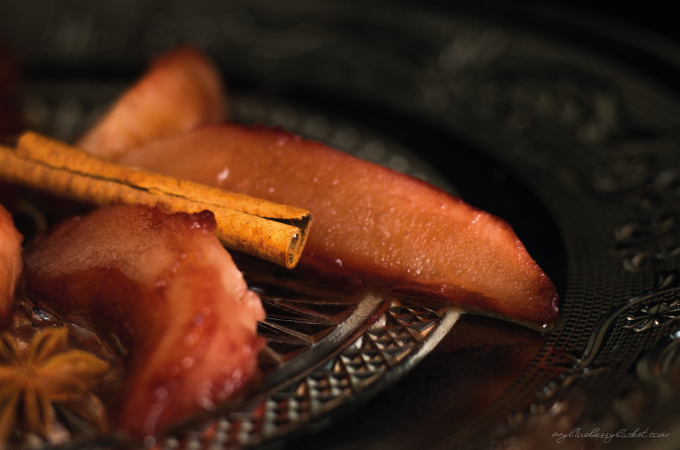
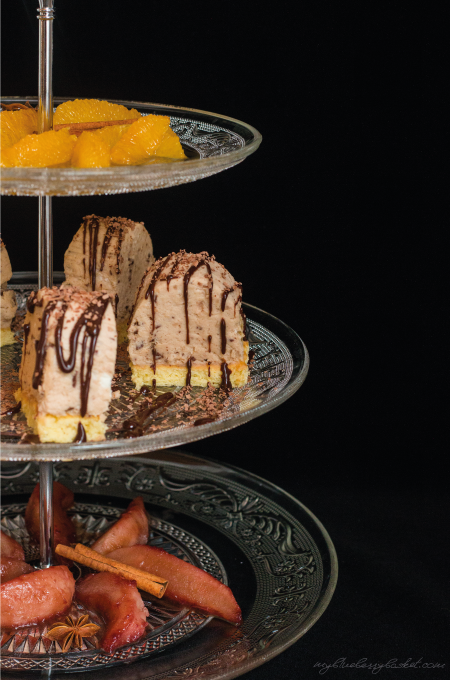
In my next blog post I will tell you, what Adi Bittermann served his guests when he was BBQing outside on the street that weekend, which prominent role sauces play in haute cuisine and why the meat is so incredibly tender at the Bittermann’s. So stay tuned! It’s worth it!
Finally, here is the recipe for printing:
- [b]For the terrine:[/b]
- 1 cup (240 ml) milk
- a pinch of salt
- 5 egg yolks
- ½ cup (100 g) sugar
- 6 sheets gelatin
- 2 tablespoons rum
- 12 oz. (340 g) chestnut puree
- 2 (480 ml) cups whipping cream
- about 2 oz. (50 g) dark chocolate, chopped
- [br]
- [b]For the sponge cake:[/b]
- 3 eggs
- ¼ cup and 2 tablespoons (75 g) sugar
- ¾ cups and 2 tablespoons (100 g) plain flour
- [b][br]
- For the caramelized oranges:[/b]
- 2 oranges
- 2 teaspoons butter
- 2 teaspoons sugar
- [br]
- [b]For the caramelized red wine pears:[/b]
- 2 pears
- 2 teaspoons butter
- 2 teaspoons sugar
- 1/3 cup and 2 tablespoons (100 ml) red wine
- [b][br]
- For the chocolate sauce:[/b]
- 1/3 cup and 2 tablespoons (100 ml) cream
- 4 oz. (100 g) dark chocolate
- [br]
- some grated chocolate for garnishing
- 2 terrine moulds (about 5x5x40 cm) or 1 longish cake tin/pan
- Preheat the oven to 180°C / 356°F.
- For the sponge cake, use a food processor to beat the eggs and the sugar until very foamy and fluffy (takes about 6-8 minutes). Sift the flour over the egg-sugar mixture (a tablespoon at a time) and carefully fold the flour into the mixture. Put some parchment paper onto a baking try and spread the sponge cake mixture (about 1 – 1,5 cm thick). Bake in the preheated oven for about 15 minutes until the cake is golden brown. Leave to cool.
- For the terrine, soak the gelatin in cold water. Put the milk, salt, egg yolks and the sugar in a pan and heat slowly (over low to medium heat) until it starts to thicken, stirring constantly. Don’t bring to the boil as the eggs will flocculate. Press the custard through a sieve into the bowl of your food processor. Add the chestnut puree and beat until well combined and all the larger pieces have disappeared.
- Discard the soaking water of the gelatin and put it into a small saucepan. Add the rum and heat until the gelatin has dissolved. Add to the chestnut-custard and mix well to combine.
- Whip the cream until stiff peaks form. Carefully fold the cream into the mixture. Fold the chopped chocolate in as well.
- Use your terrine/cake mould(s) to cut the sponge cake into strips that fit your mould. Line your mould(s) with cling film.
- Put the chestnut cream into the mould(s) and put the sponge cake strips on top. Cover with cling film and allow to set and cool in the fridge for at least 4-5 hours, but best overnight.
- For the caramelized oranges, cut off the top and the bottom of the oranges and peel them with a very sharp knife by cutting off the peel. You must cut off all of the white pith. Then segment the orange by inserting the knife right beside each small membrane and cut out all the orange segments. In the end you should have orange segments with no white membrane on them. When segmenting the oranges collect the juice. Melt the butter and the sugar in a non-stick pan and heat until it starts to caramelize. Add the orange juice and simmer until all the hard bits have dissolved. Then add the orange segments and steep over low heat for about 2-3 minutes. Set aside and allow to cool.
- For the caramelized pears, peel and deseed the pears, cut into wedges. Melt the butter and the sugar in a non-stick pan and heat until it starts to caramelize. Add the red wine and simmer until all the hard bits have dissolved. Then add the pear wedges and steep over low heat for about 3-4 minutes. Set aside and allow to cool.
- For the chocolate sauce, chop the chocolate into ½ – 1 cm (1/4 – ½ inch) chunks. Heat the cream in a saucepan until it starts to boil, then remove from the stove. Add the chocolate chunks and stir until the chocolate has melted completely.
- Turn the cooled terrine onto a serving plate, remove the cling foil and cut into 2 cm (3/4 inch) thick slices. Arrange on plates. Fill the chocolate sauce into a small freezer bag and cut off a tiny edge (only about 1-2 mm!) and thinly pipe the chocolate sauce over the chestnut terrine. Serve with the red wine pears and/or the caramelized oranges. Sprinkle with grated chocolate.
